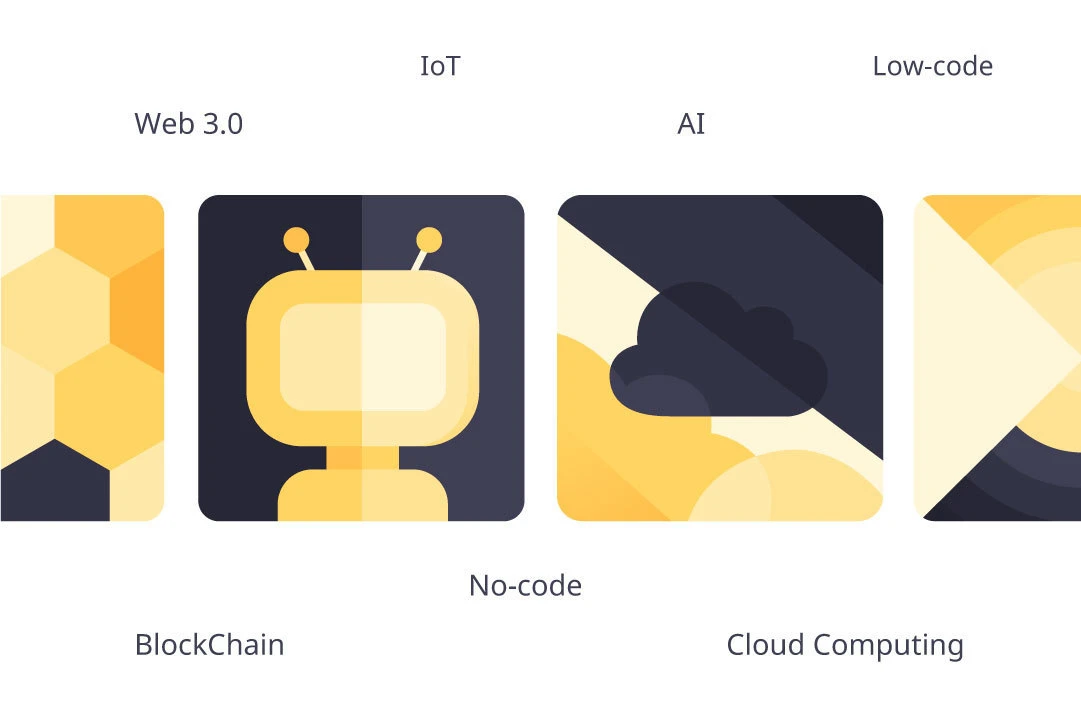We are in a time where new technologies are being introduced rapidly in the market. This means for any business to stay competitive, it’s important to stay adaptable to change. You have to keep informed of the trends shaping the future to keep thriving.
One of the most important frontiers for innovation to keep watching is the software development sector. By understanding the currents and undercurrents in this area, you can get a wider view of where the world is heading. Dive into our article to learn about the breakthroughs in this landscape.
Artificial Intelligence and Machine Learning
The AI software market size valued at USD 150.2 Billion in 2023 will continue to expand at a CAGR of 37.2%. Driving this growth are innovations like Generative AI which are improving predictive analytics, customizing user experiences, and aiding in data-driven decision-making.
Beyond this, AI and ML technologies are being integrated in software to help in forecasting demand, setting dynamic prices, maintaining equipment predictively, and in algorithmic trading. Also, machine learning algorithms promise to offer deeper insights by analyzing large datasets without manual programming.
DevOps
DevOps combines development and operations teams, improving collaboration, productivity, and speed. With growing demand, DevOps is expected to be six times larger than the 2023 market value to reach $63.4 billion by 2032.
Its success depends on skilled teams, good communication, and a positive culture, leading to quicker software updates, reliability, and stable business operations. In 2024, it’s important for companies to embrace software development principles. This includes automation, continuous integration/delivery (CI/CD), and configuration management to innovate quickly and satisfy customer needs.
Chatbots and Virtual Assistants

Chatbots and virtual assistants are becoming more common on websites and apps, changing how users interact. Studies show that about 80% of businesses will be using chatbots this year.
These AI chatbots use natural language processing and machine learning to act like humans in conversations. They offer benefits such as better workflows, lower staffing costs, and 24/7 customer support. Also, they improve training, productivity, customer satisfaction, and sales, and get smarter with each interaction. Adding AI chatbots to custom software is of high importance for modern businesses.
Internet of Things (IoT)
The Internet of Things integrates operational and information technology into a network of devices and sensors. The technology gathers real-time data from machinery, vehicles, and buildings, helping businesses in improving operations.
Thanks to advancements in AI and other technologies, the IoT sector will see significant growth in 2024. According to Statista, it will reach $1.3 trillion by the end of the year. Future forecasts, up to 2030, also predict steady revenue growth, highlighting its impact on business competitiveness. This will increase the demand for IoT-related software products.
Cloud Computing
The move to remote work and decentralized teams has greatly increased the use of cloud computing. As a result, the global cloud computing market will continue to grow at a CAGR of 17% from 2023 to 2032.
Facilitating this growth are platforms such as Amazon Web Services, Microsoft Azure, and Google Cloud Platform. They are vital for businesses looking for flexibility, cost savings, scalability, strong data security, and smoother operations. For this reason, more businesses will shift their software infrastructure to the cloud.
Low-code and No-code
Low-code and no-code platforms enable organizations to develop applications with minimal programming. These platforms come with a user-friendly, drag-and-drop interface that significantly speeds up the software development process. This allows non-developers to easily create, test, and deploy solutions.
Expected to account for over 75% of new application development by 2026, the popularity of low-code and no-code will only continue to rise. Businesses are encouraged to leverage these tools for custom solutions that fast-track digital initiatives.
Single-Page Applications
Single-Page Applications dynamically update content on one webpage, eliminating the need for multiple page loads. This makes them faster and more cost-effective than traditional apps.
SPAs use browser caching, AJAX, HTML5, and JavaScript frameworks like React, Angular, and Vue.js to update the Document Object Model smoothly. They are utilized by big platforms including Google Maps, and GitHub, to avoid full page reloads.
For tech leaders aiming to excel in software development, adopting SPA techniques is key to delivering quicker and more engaging user experiences.
Blockchain Technology

Blockchain technology offers a secure, decentralized way to record transactions without a central authority. This makes it valuable for supply chain management, product authentication, and digital payments.
With the development of smart contracts, the technology is set to enable new uses. These include automated supply chains, micropayments, asset tokenization, self-managed identities, and decentralized data management. In 2024, leaders in technology should investigate blockchain solutions to improve traceability, security, payment processing, and data sharing outside of their organizations.
Web 3.0
Web 3.0 is evolving the internet towards interconnected data, AI, decentralized applications, and virtual worlds. It is changing how data is shared and monetized in open, trusted environments.
For tech leaders in 2024, it’s important to keep up with Web 3.0 trends such as decentralized storage, micropayments, NFT marketplaces, the metaverse, and AI interfaces. Moreover, it’s important to consider integrations with new data exchange protocols, blockchain, and token-based incentives. This move towards a read-write-own web model marks a new phase in business, shifting from centralized data control to user empowerment.
Progressive Web Apps
Expect the PWAs market to surpass $10.44 billion by 2027. This is because they combine native mobile app features with the advantages of websites, providing consistent functionality across devices and offline access.
Businesses can get an economical way to deliver app-like experiences, such as push notifications and contactless payments, using a single codebase. As mobile use increases, adopting PWAs could be a key shift in software development strategies. Google’s focus on PWAs for Android highlights their rising significance.
Voice-Enabled Applications
The rise of voice-based interfaces, exemplified by devices like Alexa and Google Home, has significantly altered how we interact with technology. In 2024, AI-driven voice chat assistants, leveraging advanced natural language processing, are set to further revolutionize this field.
These assistants offer smart responses tailored to the context by using large language models, leading to specialized voice apps for different needs. For businesses looking to keep up with changing customer preferences, adopting voice technology through chatbots, voice search, and audio interfaces is important.
Why Adapting to These Trends is Crucial for Future Success?
The rapid evolution in software technologies emphasizes the critical need for technology leaders to embrace, rather than resist, change. Technologies such as cloud computing, IoT, blockchain, AI, and low-code platforms have already proven their value by delivering revenue growth, cost efficiencies, and new product capabilities, shaping the strategic direction of organizations for the coming years.
Delaying the adoption of these technologies can result in lost first-mover advantages and concede market leadership to competitors. In contrast, early adopters report significant enhancements in customer satisfaction, employee productivity, and overall financial performance.
Over To You
We have covered the most critical software development trends that may be helpful for IT strategy and planning in the coming years.
For customized software that maintains your competitive edge, consider partnering with ORIL. We specialize in cutting-edge technology, AI integration, and custom software development. Our team ensures your digital transformation aligns with your vision.





